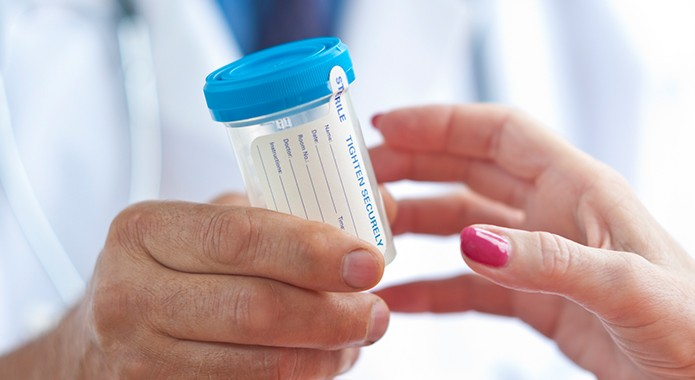How employment drug and alcohol testing works

There are many studies that have indicated that workplace drug use cost employers billions of US Dollars in lost revenue every year. This accounts for accidents, lost time, workers’ compensation costs, and healthcare. Drug screening practices are now relaxed in areas where they have legalized marijuana, but most companies still need to have employee drug testing to look for PCP, cocaine, amphetamines, opiates, and marijuana.
Remember that drug testing in workplaces is usually a standard practice, so all applicants have to expect it in the recruitment process of most companies. It’s also necessary to have a good understanding of workplace drug testing so that you can create effective drug test policies that are effective, comprehensive, and compliant with state and federal regulations and laws. This article discusses how employment drug and alcohol testing works.
Drug testing process
Most employers decide to do drug and alcohol tests on current and prospective employees for many reasons. One of them is to create a healthy and safe environment for customers and employees. They also want to identify and disqualify candidates right away who use illegal drugs and deter alcohol or drug abuse among the current employees of the company. Also, they want to comply with federal and state regulations and laws. For example, the United States Department of Transportation requires drug testing for employees who are in some safety-sensitive positions.
Keep in mind that employers are usually required to get written consent from any applicant before they decide to do a drug test. Therefore, they need to understand that eligibility to fill in the position depends on the drug or alcohol tests. Most employers tend to outsource the drug screening part of the hiring process to drug testing vendors or specimen collection sites. In most cases, the applicant needs to do the testing within a few days of their job application so that there is a narrow window of time they may get clean.
After sending the specimen to the lab, the results can be available quickly. It often takes less time when the applicant is drug-free. But a positive test can take longer as it needs to be re-verified before the potential employers and applicant get the notification. The lab can keep the positive test samples in case the applicant challenges the findings.
You should note that background check processes for many entry-level positions are common for people entering the job market. Today, drug users are using some creative ways to get around the challenge of requisite drug screenings. For example, periodic cocaine users can sometimes pass a drug test twenty-four hours after utilizing the illegal substance. Unfortunately, even chronic drug users can need just a couple of days to test clean. Likewise, the same time frame applied to PCP and heroin users. On the other hand, marijuana users need a long detoxification period. This is the reason why these users usually find alternative ways to give up the substance.
When it comes to urine samples, people who use marijuana sometimes try to change their sample by adding some agents like bleach or dish soap or submitting a synthetic sample. Also, drug users can find legal substances at most local general nutrition shops to flush their systems. And, some drug users even try to borrow urine from a clean individual to pass off as theirs.
As you can see, many drug users always find their way around drug screening regardless of whether they decide to cheat the system or detox. Hence, with the increase in ways to beat drug screenings, it makes sense to outsource the drug screening process by finding companies that offer holistic options to potential job candidate dishonesty.
Situations that deserve a drug test
There are several circumstances that you can decide to write the drug testing policy for your organization. There should be pre-employment testing. After an offer of employment, the job candidate needs to accept to be tested otherwise the offer can be withdrawn if the test results are positive. Because most job candidates prepare for this pre-employment testing by avoiding drug use for a couple of days, most employers do extra unannounced drug tests or probationary staff members, though some states usually don’t allow this practice.
There is also another drug test that is based on reasonable suspicion. Remember that you can do reasonable suspicion testing when you observe and document the signs and symptoms of drug use in your employees. This type of drug testing is discretionary, making it crucial for your company’s supervisor to attend a training program that includes knowing the clear and consistent signs of drug use. Someone else also needs to corroborate the suspicions of the supervisor.
Objective criteria are usually utilized to justify a post-accident test on a staff member. The accident can lead to fatalities, property damage that exceeds a certain amount, injuries that need off-site medical care, and police citations. There are some employers who opt to call this form of testing post-accident so that it can cover any situation in which an injury or accident could have happened, but was averted to help them to rule out the presence of alcohol or drugs as the influence of the accident.
You can also choose to do random testing, but this type of drug testing doesn’t offer advance notice and can be utilized to deter drug use. Employees can be chosen at random from a list of workers on a scientifically arbitrary basis to make sure there is the same chance for selection of employees.
There are also periodic tests that can happen uniformly across the employee bases, often annually, and especially for positions that need regular physicals. You should note that periodic tests are usually planned for by avoiding drug use for a couple of days before the scheduled drug testing.
Lastly, there is return-to-duty drug testing that applies to staff members returning to their jobs after a prolonged absence. This is often because the employee tested positive in the last drug test and may have undergone the required rehabilitation and treatment for substance abuse. Also, post-rehabilitation testing tends to be unpredictable and periodic.



